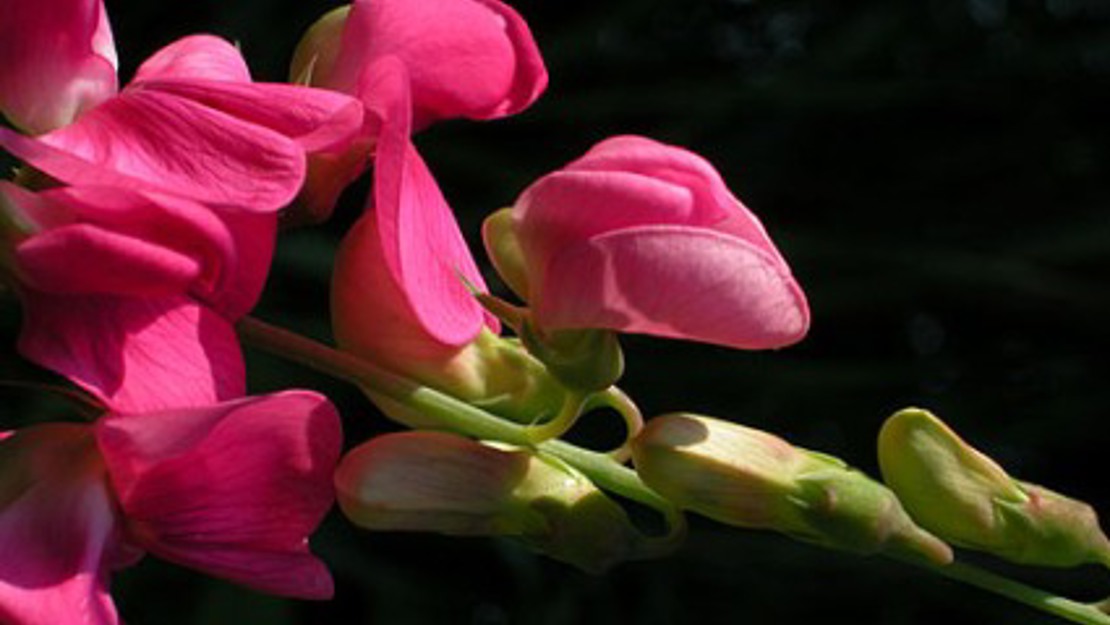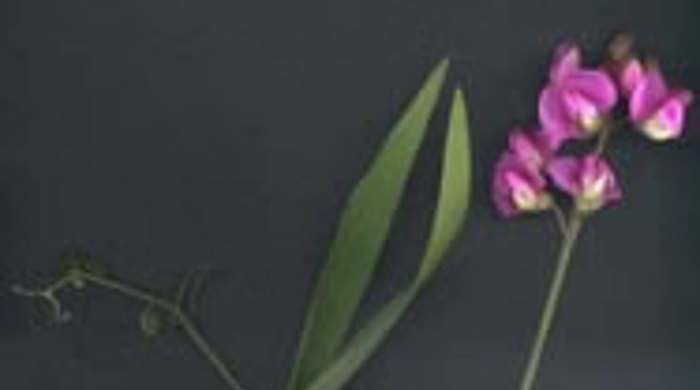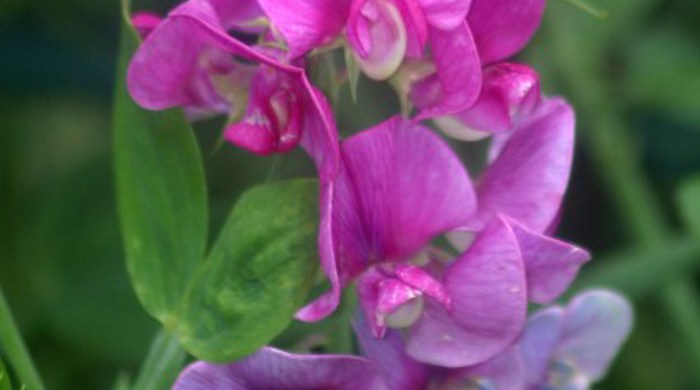Lathyrus latifolius
Everlasting pea
Family: Fabaceae
Origin: Europe, North Africa

Regional Pest Management Plan (RPMP) status
- Not a legally declared pest
General description
Scrambling perennial herbaceous vine. Stems are hairless and winged. Leaves are alternate, smooth and compound, with a pair of leaflets borne on a winged petiole. Flowers are purple/pink/magenta and borne in racemes in September – May. Seed pods are flattened, green maturing to brown and split open into curled segments.
What you need to know
Although everlasting pea is not a legally declared pest plant, it may still be invasive in some situations. Consider lower risk alternatives for your garden, such as native plants.
Habitats
Open areas, urban areas, disturbed sites, gardens, wasteland, roadsides.
Dispersal
Seeds dispersed by explosive dehiscence. Vegetative spread from rhizomes. Human-mediated dispersal through deliberate plantings.
Impact on environment
Can form dense infestations and smother native vegetation. Nitrogen fixer.
Control
Site Management
Remove all fruits/pods to prevent seeding. Requires regular follow up.
Recommended approaches
Physical control
Method: Pull out.
Plant parts requiring disposal: Seeds.
Disposal options: Remove to greenwaste or landfill if practical.
Biocontrol
Biocontrol is currently not available for this species.
Community agrichemical control recommendations
No qualifications: Cut stump and paste freshly cut base of stems with glyphosate gel. Foliar spray with 100ml glyphosate green per 10L of water.
Caution: When using any herbicide or pesticide please read the label thoroughly to ensure that all instructions and safety requirements are followed.





